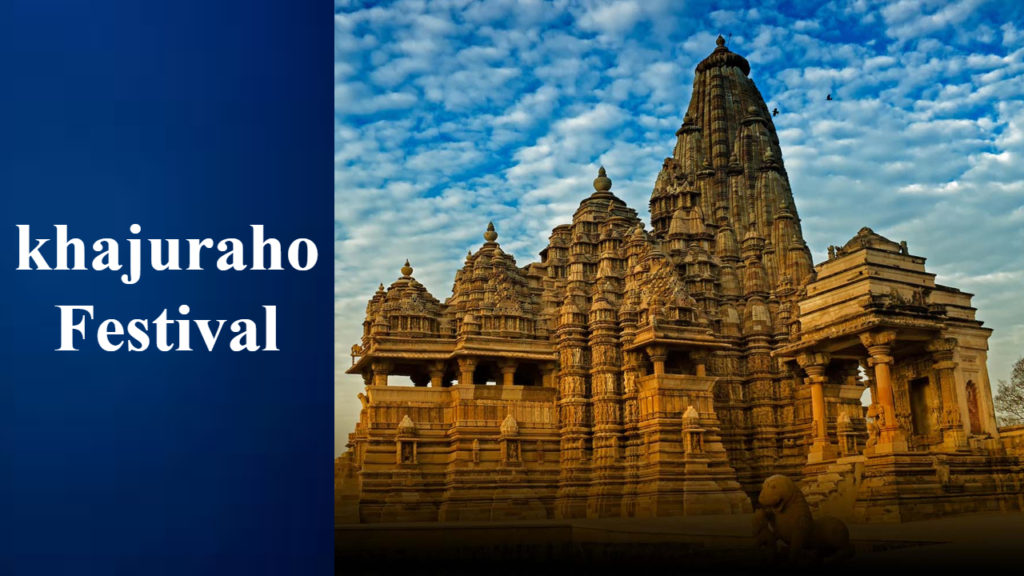
The Khajuraho Festival is an annual dance and music festival organized in Khajuraho during the month of March. This festival uses the beautiful temples of Khajuraho as a background setting to create a secondary attraction for tourists. Artists of national eminence are invited to perform.
Khajuraho is identified as a group of temples located. in the Chhatarpur tehsil of district Chhattarpur in Bundelkhand-Baghelkhand region of Madhya Pradesh. It has been an ancient pilgrim center t fie interest of the Government of India in Khajuraho as a place of tourist attraction was kindled by a group of twenty-four temples, dating back to the period 950 A.D.-1050 A.D. These temples, attributed to the Chandela rulers, represent Hindu, Buddhist, and Jain religious traditions
Khajuraho is a tourist attraction for both, domestic and foreign tourists. It is, however, to be noted that the duration of their stay is very short. The Khajuraho Festival may be considered as an attempt to create a secondary tourist attraction by using the temples. The Festival is an annual feature of dance and music held in the month of March. Artists of national eminence are invited’ to perform. Originally conceived by the Madhya Pradesh Tourism Development Corporation, the Festival was first organised in 1975 to coincide with the India Tourism Year. It marked the beginning of an experiment in organised planning and integrated development of Khajuraho as a tourist resort. Since the Khajuraho Festival is a contrived tourist product, it is organised to overcome the twin limitations of Khajuraho. As mentioned earlier, the tourists’ duration of stay is very short and so also is the tourist season. The tourist traffic begins to take a downward trend by mid-March. It was, therefore, thought that a cultural extravaganza in March might help improve tourist arrivals in the lean period, prolong their duration of stay and, in general, provide a boost to tourism development here. Secondly, Khajuraho does not have any extant culture of performing arts with which the temples as a primary tourist attraction can be associated for tourism purposes. Thus, the staging of a festival of dance and music is aimed at improving the value of temples as a place of tourist attraction.
Method of Orgaraising
The Khajuraho Festival was originally planned as a festival of local BundeUrhPndi dance and music forms to be held every year during the month of December. The venue was the imposing Kandariya Mahadeo temple in the Western group of temples. The Festival was open to all and no tickets were imposed on the visitors. The primary responsibility of organizing the festival rested with the Department of Culture. The Festival was not a success initially. Due to improper coordination of activities with the Department of Tourism, there was poor publicity of the event and not many tourists could 6e attracted to Khajuraho. An early review of the festival in 1979-80 led to several improvements. It still is an annual event of dance and music. However, the timing has been changed from December to March in order to suit the planning proposals of the Tourism Department. The venues at present are the temple-lawns of the Western complex. The artists who perform at the festival are all eminent and well-known performers in India. So grandiose and imposing is the temple setting, and so inspiring the natural scenic beauty that most artists consider their participation in the festival, a full culmination of their artistic brilliance. No attempt, however, is made to involve the local talent. The organizational responsibility rests with the Tourist Department. An entry fee has been imposed since. 1979 and this he t52 further effect of excluding the local populace. The festival is publicized in local and national newspapers and documentaries are shown on the television. However, not all tourist-5rochures published by the Tourist Department mention the Khajuraho Festival as a prominent tourist attraction.